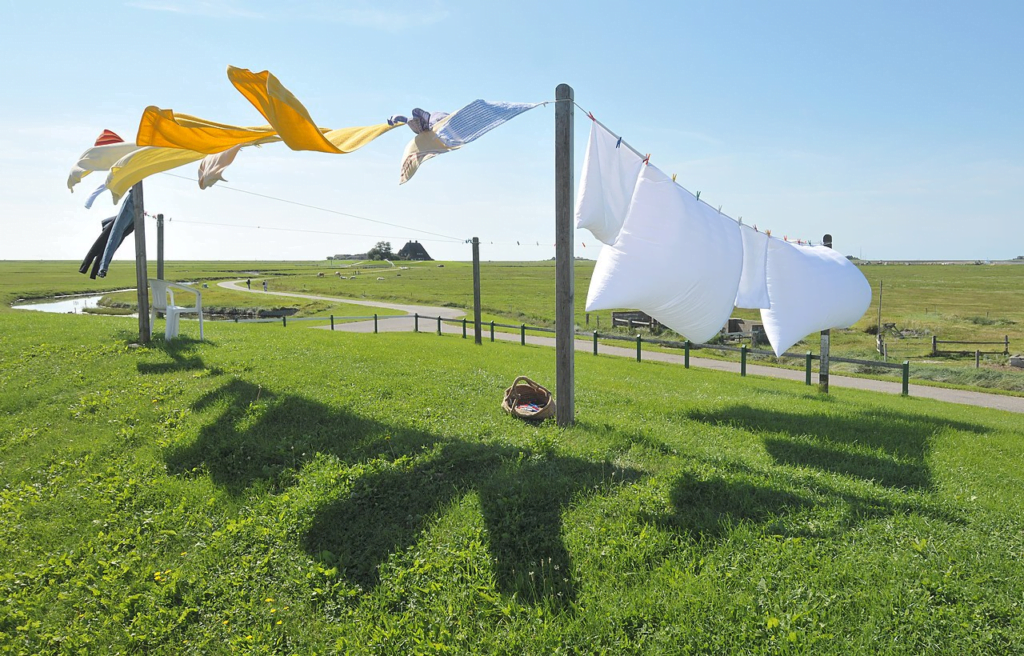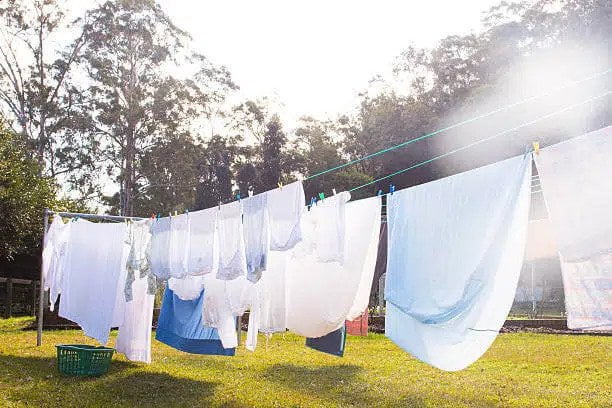Choosing the right washing line for your laundry is not just a matter of convenience; it’s a decision that significantly affects the efficiency of your household chores and the management of your living space. In an era where maximizing indoor and outdoor spaces is crucial, selecting an appropriate washing line becomes essential for home management.
The type of washing line you choose dictates how effectively you can dry your clothes, manage large laundry loads, and utilize available space, whether in a small apartment or a sprawling backyard. This guide delves into the various types of washing lines, highlighting their unique features and helping you make an informed decision that suits your lifestyle and laundry needs.
The Basics of Washing Lines

A washing line, fundamentally, is a system for air-drying clothes. It typically consists of a cord, rope, or wire stretched between two points, such as poles or walls. The primary purpose of a washing line is to dry clothes by exposing them to air and sunlight, a natural and energy-efficient method. When selecting a washing line, several factors must be considered. Space availability is paramount; some lines require a vast area, while others can fit in compact spaces. The average laundry load size is also crucial, as the line should accommodate the volume of clothes typically washed. Finally, local weather conditions play a role—some lines are more suited to certain climates than others. Understanding these basics sets the stage for exploring the different types of washing lines available.
Retractable Clotheslines
Retractable clotheslines offer a flexible and space-efficient solution for drying laundry. These systems allow you to extend a line when needed and retract it after use, freeing up space. This feature makes them ideal for indoor and outdoor drying, especially in homes with a premium area.
The retractable clothesline typically consists of a mounted reel that houses a line, which can be pulled out to a desired length and locked in place. When unused, the cord retracts back into the reel, maintaining a tidy appearance and conserving space.
One of the significant advantages of retractable clotheslines is their versatility. They can be installed in various settings, including small balconies, patios, or even inside laundry rooms. Despite their convenience, it’s important to manage the water that drips from wet clothes, especially when used indoors. Placing a rag or tray underneath the line can efficiently catch drips, keeping the area dry and clean.
Retractable clotheslines are a smart choice for those who require a drying solution that adapts to their living space while offering the practicality of traditional clothes-drying methods. Whether in a compact apartment or a house with limited yard space, a retractable clothesline provides an efficient and space-saving way to dry your laundry.
T-Post Clotheslines

The T-Post clothesline is a traditional and robust drying solution, ideal for households with significant laundry needs. Characterized by its T-shaped poles, this type of clothesline typically features multiple vinyl-coated lines between two sturdy posts. These lines can hold a considerable amount of clothing, making T-post clotheslines a go-to choice for large families or those with heavy laundry demands.
One of the key advantages of T-post clotheslines is their durability. The poles are often made of rust-resistant metal, ensuring longevity even in varied weather conditions. To further enhance stability, these poles can be secured in the ground with concrete, mitigating the risk of them toppling over in strong winds or under the weight of wet laundry.
However, the installation of T-post clotheslines is more permanent and space-consuming. They are exclusively suited for outdoor environments, such as spacious yards or gardens, where they can be installed without obstructing other activities. Before opting for a T-post clothesline, it’s essential to assess the availability of outdoor space and the typical volume of laundry to be dried. T-post clotheslines offer a reliable, long-term solution for those dealing with large quantities of washing and possessing ample outdoor space.
Drying Racks

Drying racks are a versatile and convenient alternative to traditional clotheslines, particularly suited for indoor use or households with limited outdoor space. These racks come in various designs and sizes, accommodating different laundry volumes and space constraints. The primary advantage of drying racks is their portability and foldability, allowing them to be stored away easily when not in use.
Most drying racks are designed to handle multiple sets of clothes, with some models even equipped to dry bulky items like shoes. Their versatility extends to the various materials they are made from, ranging from lightweight metals to sturdy woods, each offering different aesthetics and durability.
Drying racks are particularly beneficial for those living in apartments or homes without access to outdoor drying spaces. They provide an affordable and efficient way to dry clothes without needing permanent installation or large areas. Their portability also means they can be moved to catch sunlight or air, enhancing the drying process. Overall, drying racks are a practical choice for anyone seeking a flexible, space-efficient, cost-effective laundry drying solution.
Fixed Head Rotary Clotheslines
Fixed-head rotary clotheslines, a traditional staple in many gardens, offer a unique combination of high capacity and efficient use of space. This type of clothesline features a central pole with arms that extend outwards, lined with multiple clotheslines. Its fixed head design means the components do not fold down but can rotate around the bar, allowing clothes to dry more quickly in the breeze.
These clotheslines are particularly suited for large backyards or gardens. Their ability to hold substantial amounts of laundry makes them ideal for families or anyone with significant drying needs. The rotating mechanism not only aids in drying but also makes accessing different sections of the line easier.
Adjustability is another key feature of fixed-head rotary clotheslines. The height of the lines can often be modified, making it easier to hang and remove laundry, a boon for individuals of different sizes or those with mobility issues. While installing these clotheslines may require more time and effort, possibly needing professional assistance, their durability and efficiency make them a worthy investment for those with appropriate outdoor space.
Wall Mounted Rotary Washing Lines
Wall-mounted rotary washing lines represent a modern and space-efficient drying solution, blending the best of traditional and contemporary designs. These lines are particularly innovative because they can be mounted on a wall, making them suitable for indoor and outdoor use. The procedure typically features a central unit that attaches to the wall, with arms that extend outwards and fold back when not in use.
The key advantage of wall-mounted rotary lines is their space-saving feature. When not used, the arms can be folded against the wall, leaving the surrounding area free for other activities. This makes them an excellent choice for compact gardens, patios, or even balconies in urban apartments.
Another benefit is the added line space provided by the rotary design, which allows more laundry to be dried simultaneously compared to a standard retractable line. The rotary mechanism also facilitates easy access to all areas of the line, improving the drying process.
Wall-mounted rotary washing lines are an ideal solution for those who need the practicality of a rotary line but have limited ground space. They provide a versatile, convenient, and efficient way to dry clothes, making the most available space.
Conclusion
Choosing the right washing line involves assessing your space, laundry needs, and lifestyle. There’s a suitable option for every home, from space-efficient retractable ropes and sturdy T-Post clotheslines for large loads to versatile drying racks and rotary designs for compact or windy areas. The key is to balance functionality and convenience, ensuring an effective and harmonious integration into your daily routine and living space.

